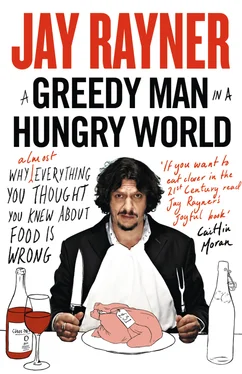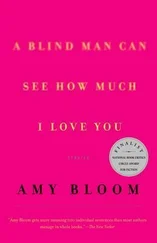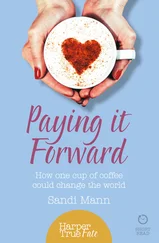This did have consequences, most of them measurable in inches. A few years ago I wrote a book about the growth of the global luxury restaurant industry. I travelled the world, telling the stories of seven great cities – Las Vegas, Moscow, Dubai, Tokyo, and so on – through their gastro palaces. In the last chapter, as my doubts about the whole business of big-ticket dining began to grow, I went to Paris to experience the high-end version of Morgan Spurlock’s film Supersize Me . In this, Spurlock ate at McDonald’s every day for a month, and if asked whether he wished to supersize his meal, he had to say yes. Doctors monitored his progress and at the end he had the fatty liver of a foie gras goose.
In the luxury version I went to Paris and ate in a Michelin three-star restaurant every day for a week; if they offered me the tasting menu I had to say yes.
I too received the once-over from a doctor. Although I managed not to put on any weight – I tended to eat just the fancy restaurant meal and nothing else each day – it didn’t much matter. My weight was already out of control. My waist was north of forty-four inches much as Edinburgh is north of Madrid. My chest was beyond fifty-two inches and I was well over twenty stone. I had avoided checking my weight. I didn’t want to know. Now, courtesy of the experiment, I knew. I was so large I had my own gravitational pull; planets were slipping out of alignment because of me. Something had to be done. I had always worked out, but only a couple of times a week; now I went five or six times a week. I dropped a lot of the carbohydrate from my diet and the weight did begin to come off. A woman working at the gym told me one day that they had nicknamed me ‘Candle Man’ because I was melting. Eventually I would shift nearly four stone. Hurrah for me.
The change didn’t go unnoticed. One of my editors at the Observer saw there was less of me and, convinced that all personal experiences could be processed into good copy, asked me to write about my gym habit and what had motivated it. I resisted. She asked again. I still said no. I hate self-congratulatory diet pieces. After all, nobody had forced me to eat the pork belly–langoustine combo. Or the truffled pommes purées. Or the millefeuilles of chestnuts and Chantilly cream. I did it all to myself. I was my own special creation. Plus there was always the risk that I wouldn’t keep the weight off. I had done the job, but for how long exactly? Inside this newly thinner man was that old fat bloke desperate to get out again. (A reasonable fear: some, though by no means all, has indeed crept back on.) But my editor was persistent and wore me down. I finally agreed to write the article on one condition: that she hire the most expensive photographer she could afford, so that I would have a killer set of pictures to look back on when my body had degenerated into a garish flesh atrocity of the sort Francis Bacon liked to paint. Gazing at those pictures – me, in the gym, lifting weights – I could say, ‘There was a moment, perhaps just an afternoon, when I looked OK.’ I posed for those pictures only for me. The fact that they were published in a national newspaper with a circulation of hundreds of thousands was neither here nor there.
After the article appeared I was told by a number of my female friends that my behaviour was curiously feminized; that by having focused so tightly on food and body image in this way I was heading more into the chromosomal column marked xx than xy. I didn’t take offence. For all the big hair and the beard and the moustache, I accept I am indeed a feminized male. My hands may be large but they are bizarrely smooth and soft. I always say I have the hands of a male-to-female transsexual, after the hormones have kicked in. My chest is so hairless I have been accused of waxing. I don’t. (I did once, but only for money; it was for a piece of journalism. It seriously bloody hurt.) I hate football. Actually, I have no interest in any sports. I like musicals. I work out to them. I prefer wine to beer and will nurse a glass of rosé without embarrassment. My wife once called me the gayest straight man in London. A very gay male friend of mine once called me a male lesbian. I said: a what? He said: ‘You’d make a great gay man if it wasn’t for the fact you’re so obviously into women.’ I wear all of this as a badge of honour. I can’t do bloke and I’m proud of the fact.
Still, I was bemused to hear that there might be anything about my relationship with food which was especially female. Because there is a particular kind of female response to food which, to me, has always looked at best exhausting and at worst completely dysfunctional; a desperate mixture of fear, guilt and shame for which I have neither time nor understanding. There is an industry to serve it. Put the words ‘healthy eating’ into amazon.comand you will get over 25,000 references. There are more than 170 books with the word ‘skinny’ in the title and 129 using that filthy four-letter word ‘thin’. There’s Cook Yourself Thin , Cook Yourself Thin, Faster and Soup Can Make You Thin . There’s The Skinny Rules , Naturally Thin: Unleash Your Skinnygirl and Free Yourself from a Lifetime of Dieting , not forgetting The French Don’t Diet Plan: 10 Simple Steps to Stay Thin for Life . There’s Hungry Girl to the Max!: The Ultimate Guilt-Free Cookbook . Pitch: ‘In Hungry Girl to the Max! , Lisa Lillien has created a book that is a must-have for anyone who craves insanely delicious food without the high-calorie price tag!’ Beware any book with exclamation marks in the title.
Over the years, of course, many of these books, and others like them, have been sold in supermarkets, alongside racks of magazines promising to show you how to ‘Slim Down in Just 24 hours’ ( Women’s Fitness ) ‘Eat, Drink and Still Shrink’ ( Women’s Health ) and ‘How to Spot a Healthy Canapé’ ( Zest ). It’s clear that for a certain type of woman the supermarket has become a one-stop shop, not merely for their groceries but also for desperate self-loathing. You can buy both the foods to make you hate yourself, and the holy texts through which, with enough commitment and devotion, you can atone for that sinful behaviour. Quite so: after all, supermarkets are built for convenience.
It all plays to a strongly held notion that the supermarket is part of a new-fangled modern way of living which, slowly but surely, is killing us. We are, it seems, the victims of a massively over-processed, fat-saturated, sugar-coated, super-sized, under-exercised food conspiracy. And this is where it gets very complicated indeed. Because there are many statistics you can deploy to show that modern life is not actually killing us at all. Indeed, you can prove it is doing precisely the opposite. It is making us live much, much longer very fast. Between 1991 and 2009 male life expectancy in the UK rose from 73.37 to 77.85 years. Female life expectancy rose from 78.86 to just over 82 years. Those are significant rises. Life expectancy in the US has risen by roughly similar amounts. At the same time, while the incidence of cancers in the UK has risen by a third since the seventies, the figure has actually been fairly stable since the late nineties, which is remarkable given that an increasingly ageing population should present more in the way of cancers. In the US the rates of a number of key cancers have been falling (especially bowel cancer, which has dropped from just over 63 cases per 100,000 men in 1995 to just over 48 per 100,000 men now.)
That, however, is not the full story, for there are other key indicators which matter here and they are around obesity and, even more importantly, the lifestyle-related incidence of Type 2 diabetes. There the story is bleak. Nobody publishes zappy self-help books about that; glossy magazines don’t have shouty, cheery cover-lines drawing you into stories on the subject. Between 1996 and 2012 the number of people in the UK with Type 2 diabetes rose from 1.4 million to 2.9 million. (In the US the picture is, if anything, worse. Between 1980 and 2008 the number of people with the disease rose from 5.6 million to 18.1 million.) Funnily enough, all those fretting, guilt-ridden young women with the money to buy copies of Soup Can Make You Thin and The Skinny Rules – and, according to the publishing industry, these books generally are aimed at those young women – are unlikely to be the ones developing Type 2 diabetes. For it is a disease both of age – the older the population the more diabetes there will be – and of poverty.
Читать дальше












